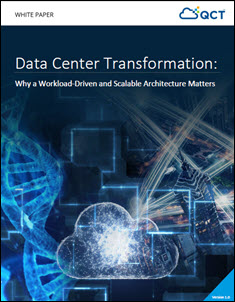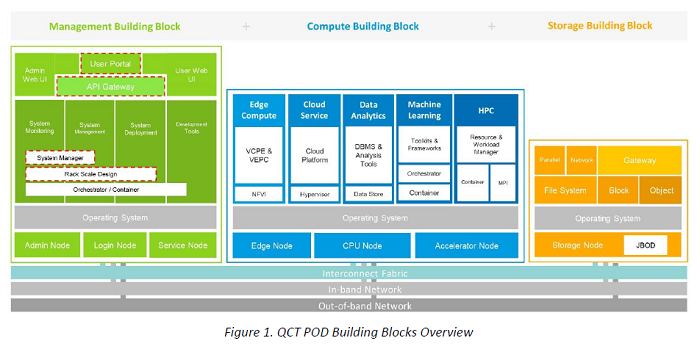
Download the full report.
Many companies today, from global giant enterprises to small and medium enterprises (SMEs), are working to rethink their digital transformation strategy, or data center transformation. Historically, enterprises were inclined to build a data center with a proprietary system based around enterprise-grade software in one overarching effort, at the same time incurring significant costs to make sure the system worked well.
Open source technologies are changing this strategy. Due to rapid technology updates, enterprises are more willing to purchase on-premise systems gradually according to business growth instead of buying the type of oversized systems that companies forecasted would take 3~5 years to build and reach 100% utilization. By doing this, they can overcome technology changes and reduce TCO, which also allows enterprises to start embracing commercial/open source hybrid solutions with a scalable architecture.
QCT (Quanta Cloud Technology) is offering its QCT Platform on Demand (QCT POD) solution that empowers enterprises to kickstart their transformation journey. It combines advanced technology with a unique user experience to help enterprises reach better performance and gain more insights. With flexibility and scalability, QCT POD enables enterprises to address a broader range of HPC, Deep Learning, and Data Analytic demands that fulfill various applications.

QCT POD contains diverse categories of compute building blocks to fulfill different vertical workloads, such as HPC, ML, Data analytics, Cloud service and Edge Compute. Based on the demand from each field and industry, QCT delivers the specific hardware and software combinations to solve challenges and gain better performance for customers. For example, within the HPC compute building blocks, there could be Singularity and MPI as options for the orchestrator. On top of that, several job schedulers like Altair PBS Pro and Slurm could be the choices for users to manage their workloads. As for the ML building blocks, Kubernetes and Docker would be the base for the orchestration, and users could further utilize other frameworks like TensorFlow, Keras, and PyTorch. With a flexible building blocks design, QCT POD would be able to meet diverse demands and solve challenges for customers.
Download the new report courtesy of QCT, “Data Center Transformation: Why a Workload-Driven and Scalable Architecture Matters” to help strategize your data center transformation.



